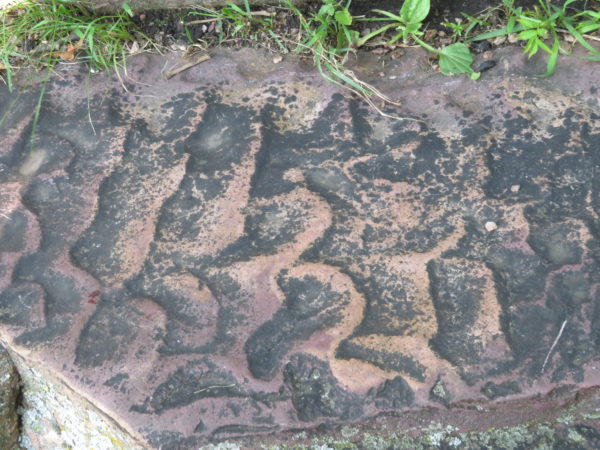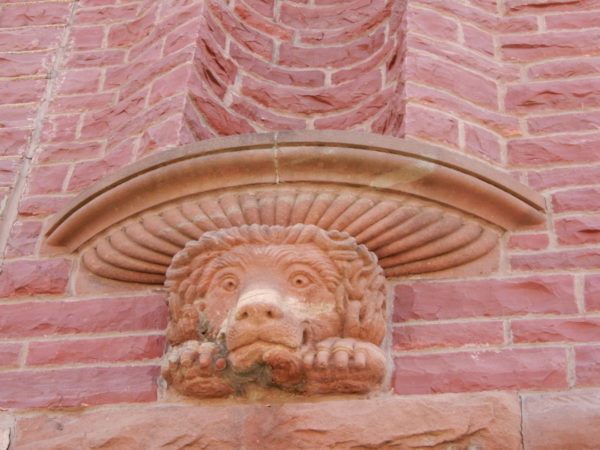August 17-19, 2017
Pipestone, Minnesota is advantageously located between Minneapolis and a number of possible eclipse-viewing sites to the south. And, we wanted to see the source of material for pipes we had seen in Nebraska and South Dakota so Pipestone seemed like a great stop.
Pipestone National Monument is one of three places where pipestone is mined. Pipestone is technically Catlinite, a very fine grained sandstone laid down over 1.5 billion years ago and subjected to heat and pressure. It is relatively soft and can be scratched with a fingernail. It occurs between layers of quartzite, usually below the level of ground water. Members of recognized American Indian tribes can apply to quarry the stone at the National Monument–with hand tools. Below are pictures of quartzite cliffs.
 A sample quarry is pictured below. Pipestone is at the floor level and below under the cliff.
A sample quarry is pictured below. Pipestone is at the floor level and below under the cliff.

 Most of the monument is prairie. Quartzite and pipestone may have been exposed by Pipestone Creek which runs through the monument, creating Winnewissa Falls and Lake Hiawatha.
Most of the monument is prairie. Quartzite and pipestone may have been exposed by Pipestone Creek which runs through the monument, creating Winnewissa Falls and Lake Hiawatha.
Some rocks in the Monument show glacial ripples
The Visitor’s Center at the Monument includes artifacts, exhibits and demonstrations. We talked for quite a while with Travis Erickson who has been quarrying pipestone and making pipes for over 35 years. We borrowed this photograph of him in his quarry.

Dave thought it would be interesting to try his hand at pipe-making. The result is pictured below.
The town of Pipestone (population about 4000) has preserved architecturally interesting historical structures. The Pipestone County Museum was built in 1896 and used as City Hall.
It and the Calumet Inn are both quartzite. Stone for the Inn was cut with a mallet and chisel.
 A local builder who operated a stone quarry carved a variety of gargoyles for local buildings.
A local builder who operated a stone quarry carved a variety of gargoyles for local buildings.
A 132 foot water tower went into service in 1921. Only one other one was built like it.
Dave found these cool mushrooms in the Water Tower park.
The Rock Island Depot, built in 1890, now houses Keepers of the Sacred Tradition Pipemakers, a non-profit organization.
It boasts the world’s largest peace pipe in its yard.























1 Comment
Susan · October 4, 2017 at 4:47 pm
I love all of the pictures